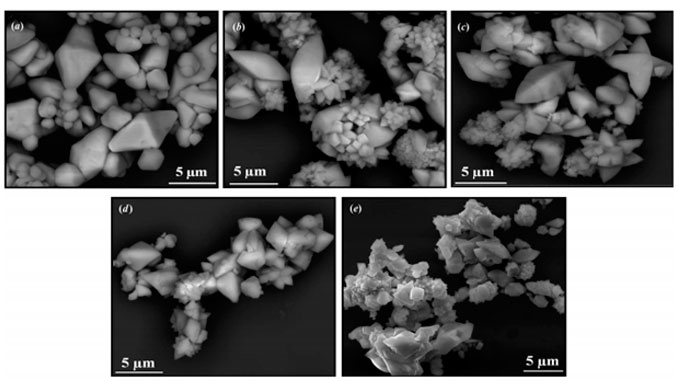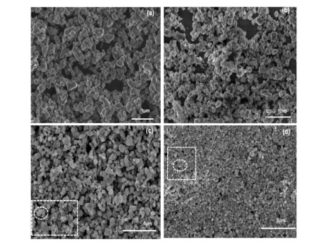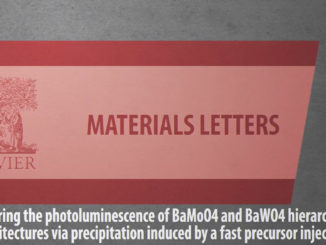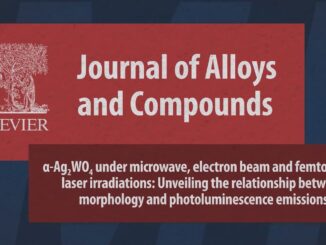
Writers: I. C. Nogueira; L. S. Cavalcante; P. F. S. Pereira; M. M. de Jesus; J. M. Rivas Mercury; N. C. Batista; M. Siu Lid; and E. Longo
Keywords: (Ba1−xSrx)MoO4; Rietveld refinement; clusters; co-precipitation; photoluminescence.
Abstract: In this article, the structural refinement, morphology and optical properties of barium strontium molybdate [(Ba1−xSrx)MoO4 with x = 0, 0.25, 0.50, 0.75 and 1] crystals, synthesized by the co-precipitation (drop-by-drop) method, are reported. The crystals obtained were structurally characterized by X-ray diffraction (XRD), Rietveld refinement, and Fourier transform–Raman (FT–Raman) and Fourier transform–infrared (FT–IR) spectroscopies. The shapes of the crystals were observed by means of field-emission scanning electron microscopy (FE-SEM). The optical properties were investigated using ultraviolet–visible (UV–Vis) absorption spectroscopy and photoluminescence (PL) measurements. XRD patterns, Rietveld refinement, and FT–Raman and FT–IR spectra showed that all of the crystals are monophasic with a scheelite-type tetragonal structure. The refined lattice parameters and atomic positions were employed to model the [BaO8], [SrO8] and [MoO4] clusters in the tetragonal lattices. The FE-SEM images indicate that increased x content produces a decrease in the crystal size and modifications in the crystal shape. UV–Vis spectra indicated a decrease in the optical band gap with an increase in x in the (Ba1−xSrx)MoO4 crystals. Finally, a decrease in the intensity of PL emission is apparent with an increase in x up to 0.75 in the (Ba1−xSrx)MoO4 crystal lattice when excited by a wavelength of 350 nm, probably associated with the degree of structural order–disorder.
See PDF: Rietveld refinement, morphology and optical properties of (Ba1-xSrx)MoO4 crystals
DOI: 10.1107/s0021889813020335




